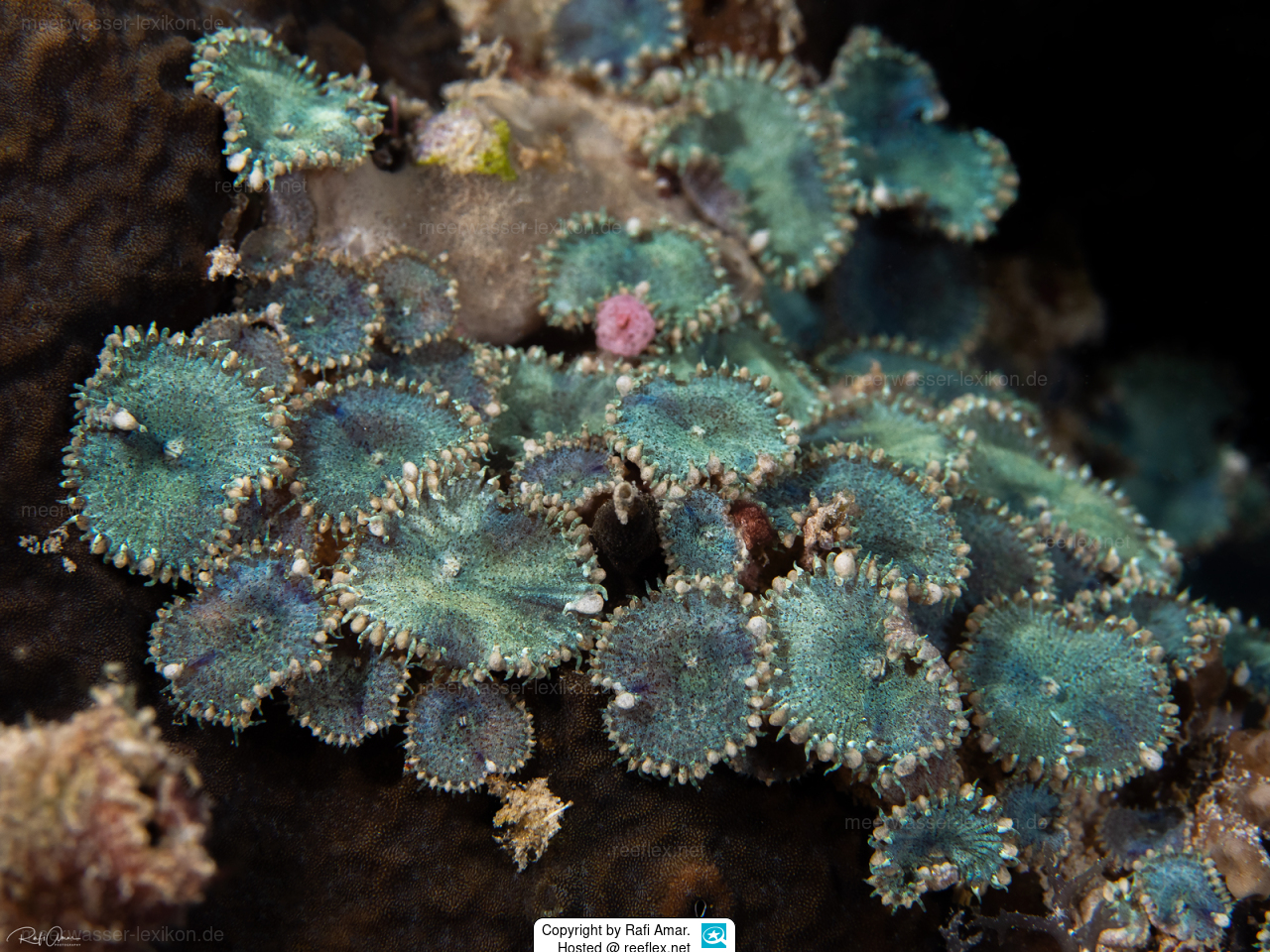Info
The holotype of Palythoa toxica was found in a shallow surf pool at Lanai Lookout and Blowhole, Oahu, and Hana District, Maui, Hawaiii.
Many stories and legends surround this crustose anemone, we have included two here for your information:
An old legend:
Over a small Hawaiiian fishing village on the island of Maui, near the port of Hana, cries of pain rang out again at night. That evening, when all the outrigger canoes had returned from the sea with the day's catch, another fisherman had disappeared. The villagers desperately searched for answers, blaming the hunchbacked loner who lived in the cliff above them. They swarmed up the ridge and tore the tapa cloak from its back, revealing gaping rows of triangular teeth in a huge mouth. They had caught a shark god, one with an insatiable lust for human flesh. Their suspicions were correct. Every day, after the canoes went out to fish, the hunchback would joyfully pass by the settlement and go for a swim to get his breakfast.
The angry fishermen mercilessly tore the hunchback to pieces and burned him completely. His ashes were thrown into a nearby tide pool. However, the demon's continued viciousness slowly turned the pond into a pool of death. Ugly little brown anemones began to cover its walls. Much later it was discovered that these "limu", when smeared on the tip of a dagger or spear, perpetuated the evil of the shark god by bringing certain death to the victim. Thus, the immobile little animals in the tide pool became known as "Limu Make O Hana" (Seaweed of Death of Hana).
Modern Legend:
In 1961, University of Hawaiii researchers interested in local natural products discovered Malo's writings about a Hawaiiian spear poison, Limu Make O Hana. There were only a few Maui natives left who knew where Limu Make O Hana grew, but none would tell. Finally, after drinking enough Okole Maluna (a local brew made from the Ti plant), one of them led the scientists to the sacred tide pool. As the biologists prepared to take samples, they were interrupted by a group of natives. They announced that the pond was "kapu" due to an ancient remedy, and warned that the evil of the curse would be activated if it was disturbed. The scientists smiled and said, "We don't believe in superstition," and took their samples. Coincidentally, on the same day, a fire destroyed the main laboratory building of the Hawaiiian Institute of Marine Biology on Coconut Island in Kaneohe Bay, Oahu. The anenome samples taken turned out to be a new species, named Palythoa toxica*, containing the deadly toxin palytoxin.
People have known about the toxicity of Palythoas for hundreds of years, with Palythoa toxica being one of the first described Palys species. On Maui, ancient Hawaiiian warriors used Palythoa much like poison dart frogs, coating their spears with palytoxin to turn them into deadly weapons.
The crust Palythoa toxica was first used to produce the infamous palytoxin, one of the deadliest poisons in nature Palytoxin (PTX)
extracted.
Palytoxin is also produced by certain free-living dinoflagellates (Ostreopsis species).
Most interesting is the reference to the LD50 of palytoxin. "The dose at which 50% of exposed animals die after intravenous administration of palytoxin (LD50) has been shown to be as low as 0.033 µg/kg body weight." For a 200-pound man, this means that intravenous exposure to palytoxin requires only 0.003 grams for half of humans; that's almost one-tenth the weight of a grain of rice!
This number shows you how dangerous palytoxin can really be.
As dangerous as palytoxin is, it is difficult to get it out of the host palythoa and into the human body, and often it is a foolish carelessness that exposes victims to the toxin.
Cooking, showering, eating, or handling palythoa without gloves or eye protection is an absolute no-no.
Warning:
We recommend that children not be left with pools of Palythoas, and secondly, that you keep your pets away from the pool, especially when working with Palys.







 Rafi Amar, Israel
Rafi Amar, Israel

















